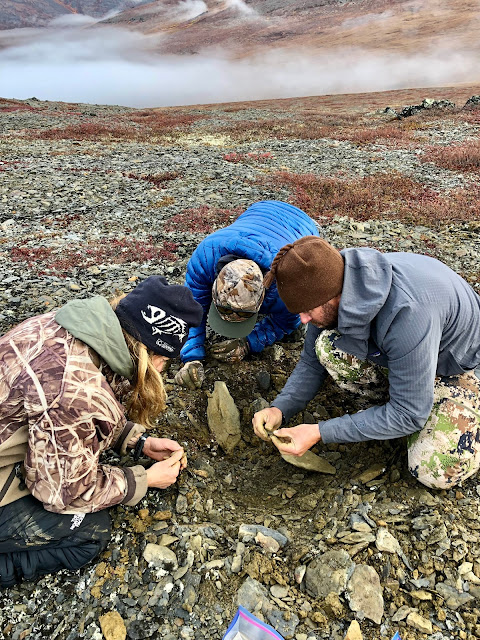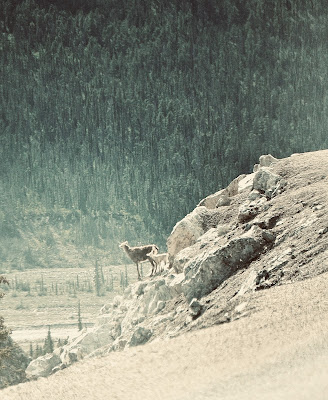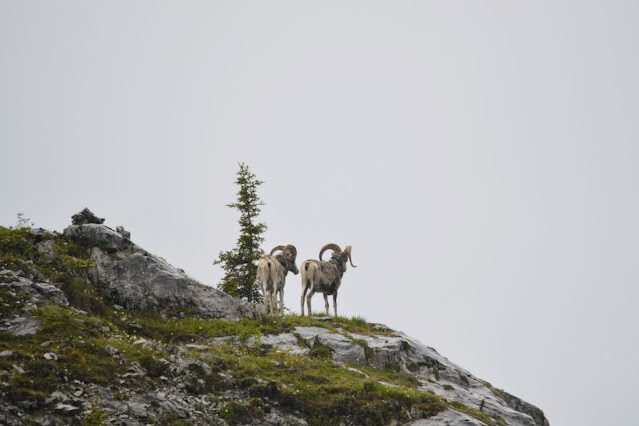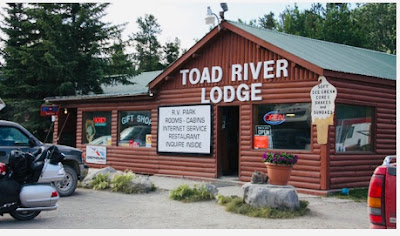Our Alaskan summer was perfectly and beautifully unpredicted!
It's said the secret to finding lasting love is to live your life, be yourself and the right person will adore you. This proved true for our daughter, Carlisle, when she reconnected with her friend Luke. Their lives had taken them different directions, but....timing is indeed everything. On July 16th, surrounded by high mountain peaks and embraced by the log walls of their emerging cabin on Chandalar Lake, they committed to an Alaskan life together.
In the past, when asked about visiting Fairbanks I would have advised against it. Not only is it Alaska's largest northern city, five plus hours from our cabin in Talkeetna, and seven hours from Anchorage, it’s unbelievably cold in winter and can be very hot and smoky in summer. However, what Fairbanks does have is proximity to countless miles of wilderness. It is indeed the gateway to the North. With a rich history of gold mining, trapping. hunting and dog mushing, Fairbanks maintains a frontier feel. Now, with Luke and Lisle splitting time between their cabin and lodge on Chandalar Lake and Fairbanks, we have every reason to visit.
It didn't take long for me to feel comfortable navigating the streets of this small city of 32,000 hearty souls.
The University of Alaska dominates the hillside outside of town. This research rich university is a leader in northern studies. I spent several hours at the Museum of the North, seen in the center of the photo above. https://www.uaf.edu/museum/plan-your-visit/hours/index.php
Once on the ground, the cranes stood regally alert, as if accustomed to posing for photographs.
Fairbanks is just 113 miles south of the Arctic Circle. We spent the first two weeks of September enjoying this unique landscape with our sons, Levi and Sutton.
https://dot.alaska.gov/highways/dalton/highway-the-haul-road/
 |
| The pipeline looks unimpressive when considering 35,000 gallons of oil per minute can flow through its 48" diameter. |
 |
| River camp at Yukon Crossing |
We traveled 250 miles from Fairbanks to Coldfoot. Those who may have watched the reality TV show "Ice Road Truckers" will remember Coldfoot as the truckers final stop for fuel and food before heading over treacherous Atigun Pass. The show focused on winter travel and it was on the pass that the trucks were usually shown in trouble, often seen slipping uncontrollably backward accompanied by frantic expletives from the drivers. The Coldfoot Cafe reserves a long table off the main dining area for these drivers. Although I'm poking fun at the TV show, driving a big rig into the Brooks Range in winter is no joke.
A sweet young girl served us coffee in the cafe and then passed through a doorway to serve the boys a beer. Although a human could pass in and out through this doorway, alcohol could not. Interestingly, our server had graduated from UVM (the University of Vermont) and was from Stamford, Connecticut. She had taken the job to see and do "something different". I assume she found what she was looking for!
The birches and poplars which surrounded us in Fairbanks, were now replaced by Alaska's boreal forest (sometimes called "taiga"). Spindly spruce, mosses, berries and scrub brush covered the rolling landscape. Occasionally, a granite tor punctured the earth shooting skyward. It was a colorful mosaic of changing leaves, marshes and clear rivers. This ecosystem is one of extremes, formed from cold temperatures, permafrost and forest fire.
 |
| Finger Rock, a granite tor. |
 |
| Looks like a dragonfly, but it's a helicopter! |
 |
| The tundra tires made for a soft landing. |
 |
| A poor picture of the bull Carlisle was interested in, but it never got in range. |
Rocky outcroppings made excellent glassing and rest locations. From here it was possible to glass several directions without moving. We named the rocks pictured below Raven’s Ridge, after a very social raven had entertained us with vocalizations and comical antics.
Scouting and good shooting soon paid off for Levi and Sutton. Carlisle didn't find what she was looking for, but she'll have a lifetime of opportunities. For Bucky and me, it was pure joy to be part of it all.
 |
| Chandalar Lake in the background. |
 |
| Levi's bull. |
We spent our remaining time hunting, mining, eating and doing the small things that make family time special.
Thick fog covered the ground on the day of our departure.
Luke made multiple trips flying us back to the lodge. Once there, we thoroughly enjoyed the company of his parents. His Dad, Rick, keeps the many moving parts of the lodge operation running smoothly while his Mom, Laurel keeps everyone moving by feeding hungry bodies and providing comfy beds. Some days there are just a few mouths to feed and other days many mouths. We enjoyed caribou stew, sheep burgers, caribou tongue and Levi’s favorites, Beer Bread and Cherry Jubilee. Sitting together at one long table and eating family style, is the perfect way to enjoy food and family. It was interesting to see what goes into operating a remote lodge. Airplanes were constantly in use placing or moving guides, packers and hunters. Meals, cabins and tents are made ready for those arriving while meat and gear are transported for successful hunters. It seemed a pickup was always going to or from Coldfoot on the Haul Road.
We were able to use the lodge's well set up meat cutting table and vacuum sealer for our own caribou meat. The meat was then put into freezers until our departure. Electricity is provided by generators and appliances are propane. Luke’s Dad showed me the "cold hole", a steel drum buried in the ground near the kitchen with an insulated lid. Laurel had asked him to get lettuce and cheese which was stored there. After lifting the top, he reached down and quickly retrieved the items, cold but not frozen. Rick said they plan to dig several more cold holes for next season. This is definitely a good idea for our North East Kingdom cabin!
The lodge
Numerous comfy wall tents for folks like us.
Client cabin
Once our caribou were in the freezer, Bucky and the boys went to work on Luke and Lisle’s cabin. Despite some rain, they were able to raise an end wall, install the main beam, set rafters and put metal roofing on. The needed materials were carefully thought out by Luke and transported by airplane during the summer.
 |
| A million dollar view! |
For me, leaving Chandalar was difficult. Having Carlisle, Luke and a their new life further north in Alaska means greater periods of separation. Yet, living their lifestyle is undeniably attractive. I just wish I was 20....maybe 30 or even 40 years younger.
We left Alaska at the end of September. I write this from North Dakota as we make our way back to Vermont. It's a long, varied and beautiful drive. If you ever desire to see the breadth of America and a great portion of Canada, it's for you.
We wound through the mountains, curve after curve undulating as if riding the black back of a common garter snake, characteristically adorn with yellow stripes.
Next stop, Vermont and her Fall foliage splendor!

















































